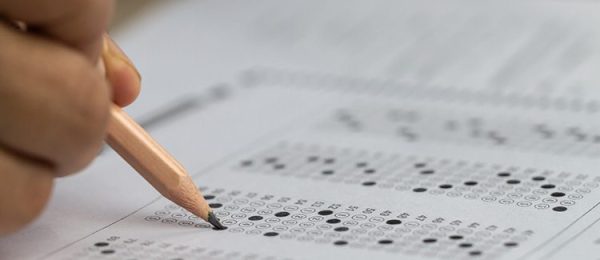Leveling the Playing Field: The Gender Biases of the P.E. Curriculum and What to Do about It
Ah, yes, physical education. Potentially the most divisive class in every school in America. I have never particularly enjoyed P.E, but perhaps I liked it more in elementary school when the class was centered around games and teamwork. Once I got older, and it focused on competitive sports like football, P.E. swiftly lost its appeal.
And yet, to my astonishment, there are always some students who seem to genuinely look forward to gym class. I wondered if it might have to do with their participation in sports outside of school—after all, it does make sense that kids who play team sports for fun would also like to do it during school hours. At first, this hypothesis held up. But I began to observe another pattern: most of the time, the students who appeared to like P.E. class were boys.
I hadn’t noticed this when I was younger, so why now, I wondered? To learn more, I surveyed students at JJHS, asking them to rate their enjoyment of P.E. as one of five categories: “I love P.E.”; “I like P.E.”; “I have no feelings on P.E.”; “I rather dislike P.E.”; and “I hate P.E.”. I also asked students to share their pronouns, grade level, and ideas for an ideal P.E. class. In total, my survey was answered by 149 students: 88 females, 42 males, and 19 nonbinary people.
Of the 88 female responders, the majority opinion, as I expected, was unfavorable. Thirty-nine responders (44%) chose “I rather dislike P.E.”, followed in second place (19 girls or 22%) by “I hate P.E.” Just 2 girls (of 88) shared that they love P.E. The overall result was an abundantly clear trend towards the negative, with 66% of female responders holding a negative opinion on P.E, 19% being neutral, and only 15% holding a positive opinion.
The male responders, in keeping with my hypothesis, leaned towards the positive. The majority of the male responders—eighteen in total or 43%—chose “I like P.E.” The second-largest portion of male responders (21%), were neutral on P.E. In total, exactly 50% of male responders favored P.E., 21% were neutral, and 29% viewed it unfavorably. However, the percentage of boys who said that they love P.E. was, surprisingly, only 7% of the respondents—just 3 people.
Of the nonbinary responders, just one student selected “I love P.E.” with another 7 students selecting “I like P.E.” In total, 58% of the nonbinary responders held a negative opinion of P.E. and 42% held a positive opinion. So, while the group was fairly divided, there was still a noticeable bias against P.E., though admittedly, the sample size was fairly small.
In terms of total responses, 81 students (54%) disfavored P.E.; 26 (17%) were neutral; and 42 (28%) favored it. Approximately 85% of the 81 people who disliked P.E. were nonbinary or female. Of the 42 people who approved of P.E., exactly 50% were male.
The final question on the survey—a request for suggestions for an ideal gym class —received a range of different answers, but a recurring theme amongst all students was a desire for greater choice. Students stated that they would much prefer P.E. if they had a say in what they were doing in class. Some suggested that independent exercise would be better than group activities. The general consensus was that P.E. would be far more enjoyable if the students could use the time in ways that worked best for them, their skill levels, physical fitness, and interests. Unsurprisingly, plenty of students suggested shortening or eliminating warm-up workouts, and several indicated a distaste for going outside in frigid weather.
Notably, girls were more likely to indicate a preference for forms of activity that don’t involve competition. Yoga was one of the most popular suggestions, along with dance, Pilates, walking, meditation, archery, fencing, aerobics, and gymnastics. Each suggestion focuses on self-improvement rather than competition and involves activities that could be practiced alone and/or at home.
While it should be acknowledged that this was not a proper scientific study—the proportions of responders were not controlled, and the sample was unfortunately quite limited at just 149 students—existing research, time and time again, has arrived at the same conclusion as this survey. The old-school physical education class is essentially designed for boys, or, at least, societal notions of what boys should be like.
In her article for Slate, Jessica Olien writes about her personal experience with physical education, which for her was such utter misery that her physical health actually suffered as a result. Much of this, she notes, was due to the mortification she endured when she failed to perform well in team sports. “The proponents of team sports in schools say it helps kids learn that they have a place in a team,” she says. “I learned early on that my place on a team was similar to that of the elderly antelope with a gimpy leg on a nature program.” The experience was enough to, quite literally, cause her to believe she was physically disabled until she was 30 years old. It seems Olien wasn’t alone in being disillusioned by P.E.: “a British study from Loughborough University showed that physical education in school can be so traumatic that it turns women away from physical fitness for the rest of their lives.” Girls who feel they don’t do well in gym class can find that sense of humiliation impacts them well after they leave school.
Aside from the typical P.E. curriculum making girls feel inadequate, it simply doesn’t align with the physical activity most girls do outside of school. Dr. Ash Casey, of the Physical Education Practitioner Research Network, writes in a summary of an earlier research paper on the topic: “Importantly, the girls suggest that while, in theory, there was a choice of activities offered to them, in reality, the choice was limited. They didn’t all want to do traditional team-games and that [sic] very little of what was offered was relevant to what the girls did out of school (e.g., swimming, aerobics, dance, jogging).” It’s worth noting that these activities align with the suggestions by female responders to the survey.
Mirroring my own experience, a 2012 study from the International Journal of Behavioral Nutrition and Physical Activity concluded that female students were, not only less likely to enjoy P.E. in their earlier years, they tended to dislike it more strongly with time. The study also suggested that a student’s perception of their own athletic ability had a major impact on their opinion of P.E. Gender did not seem to matter to students with a good impression of their own physical ability—both groups (the only groups involved in the study were female and male students) experienced an overall increase in enjoyment of P.E. with time. For students with low confidence in their physical abilities, though, it was different: male students’ opinion of P.E. remained at about the same level, but on average the female students’ approval dropped sharply. The study illustrates that, instead of helping to build their confidence, P.E. class overwhelmingly makes girls that are already insecure in their athletic skill feel even worse about themselves.
According to Pride Sports in the UK, nonbinary people are some of the least physically active people in the LGBTQIA+ community, mainly because of their early experiences in P.E. The main issue is that P.E. is often gendered, as are school-run sports programs, and nonbinary students often feel excluded. Changing rooms, fitness tests, teams—most of the time, they’re split into ‘male’ or ‘female’, even though there is no real reason to do so. One nonbinary survey responder said, “I think P.E. discriminates against me.”
As studies have shown, the old-school P.E. class can impress female and nonbinary students with a lasting feeling of exclusion and inadequacy. The bottom line is, regardless of teaching style, the physical education curriculum in most schools is designed for a very specific type of person, and it just isn’t working for everybody else. And if you’re miserable in P.E., you’re potentially going to avoid physical activity for the rest of your life, which is exactly the opposite of what P.E. is supposed to be doing. So, what should it be doing, and why is this important?
One easy solution is for the physical education curriculum to address the biggest student complaint: the inability to choose between forms of activity. One survey responder proposed that P.E. ought to still offer competitive sports, but should also have individual exercises, any of which a student could elect to join from day to day. “As long as they were getting a decent exercise in, and were actually doing something related to a workout, kids in the class would probably feel happier doing what they felt like doing rather than having to overwork themselves or find[ing] the class a chore or grueling task.”
Other accommodations are important to consider. Another participant, for instance, makes the case that disabled students, students with low stamina, and students with anxiety about team sports should be given options for activity that work well for them. One participant, who has physical limitations, suggests that the current options for medically-excused students are quite lacking. “I am irritated with the policy of assigning busywork for medically-excused students. I believe that this policy constitutes a literal ‘insult to injury’ as the work given doesn’t have any purpose or value beyond merely counting for a grade.”
P.E. just isn’t working for most of us, and that’s a problem in a country where physical activity levels are dismal. Perhaps best summing up the entire issue is Survey Participant #111’s response. She calls for a total overhaul of P.E., including less centering on male-dominated sports, eliminating physical fitness tests such as the PACER test, and generally making the class more flexible and less demeaning. Basing the standard by which every student is judged on the physical ability of the most athletic students is not, and never has been, an effective way of running a physical education class. In fact, it could be argued that universal standards shouldn’t be set at all, as the point of P.E. should be self-improvement based on knowledge of one’s own strengths and weak points. Or, as Survey Participant #111 says: “I shouldn’t have to prove my physical fitness to a stranger at 9 in the morning in jeans which I am not allowed to change out of.”

Reader, writer, birding enthusiast, Ravenclaw. Ask me about the periodic table of elements.





